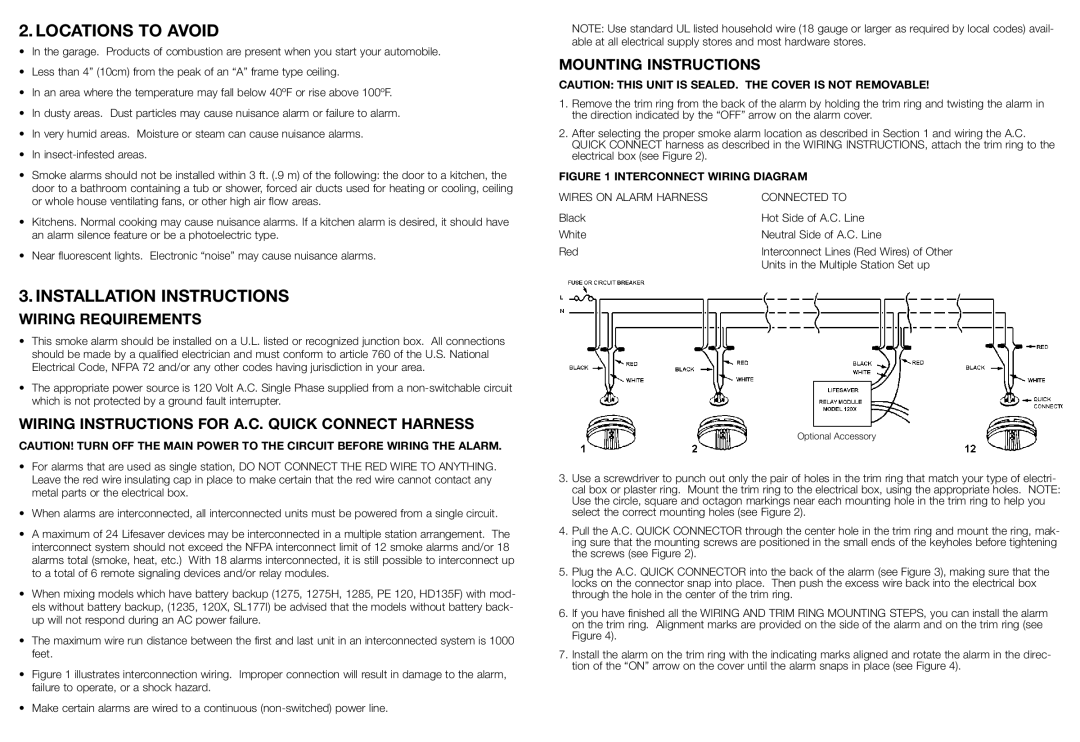440379, 1235 specifications
The Kidde 1235,440379 is an advanced fire safety solution designed to provide reliable and efficient protection against fire hazards in residential and commercial settings. This model reflects Kidde's commitment to innovation and safety, integrating state-of-the-art technology with user-friendly features.One of the standout features of the Kidde 1235,440379 is its dual-sensor technology. This combination of ionization and photoelectric sensors enables the detector to effectively sense both fast-flaming and smoldering fires. The ionization sensor excels in detecting rapid, intense fires that produce little smoke, whereas the photoelectric sensor is sensitive to slow-burning fires that generate heavy smoke. This dual approach significantly enhances the unit's capability to provide early warnings across different fire types, ensuring that users have more time to respond in emergencies.
In addition to its advanced sensing technology, the Kidde 1235,440379 is equipped with a voice alarm feature. This audible alert is designed to communicate the type of hazard detected, allowing occupants to make informed decisions on how to react quickly. This is particularly beneficial in high-stress situations where clear information can make a critical difference.
The unit also incorporates a convenient battery backup system, ensuring continued operation even during power outages. Its easy-to-read LED indicator provides real-time status updates, showing whether the unit is functioning correctly or if maintenance is required. Additionally, the Kidde 1235,440379 is designed with a user-friendly test/reset button, enabling users to easily check the functionality of the unit.
Installation of the Kidde 1235,440379 is straightforward, making it accessible for homeowners and property managers alike. The detector can be mounted on walls or ceilings, and comes with all necessary hardware. Its modern design and compact size ensure it blends seamlessly into any environment without being obtrusive.
Furthermore, the Kidde 1235,440379 conforms to stringent safety and environmental standards, assuring users of its reliability and performance. With its comprehensive features, advanced sensing technologies, and user-focused design, the Kidde 1235,440379 stands out as a top choice for anyone seeking enhanced fire safety for their home or business. Investing in this smoke detector is a proactive step towards ensuring the safety and well-being of all occupants, reflecting a commitment to comprehensive fire protection strategies.

